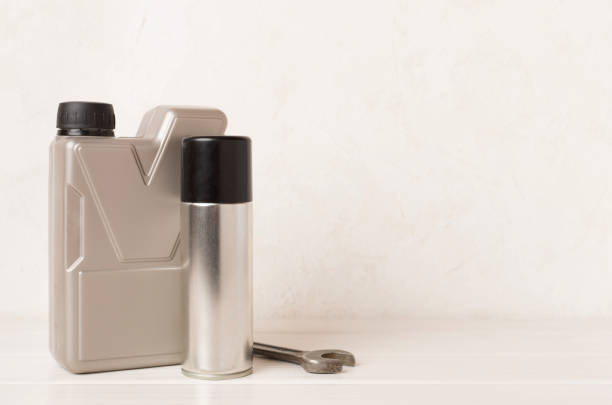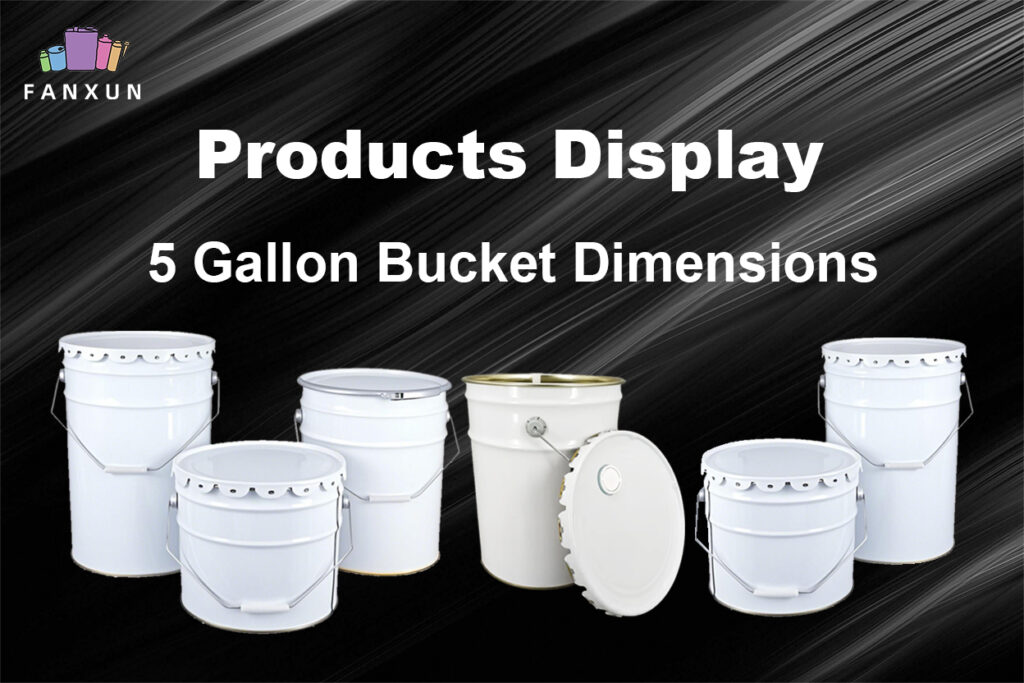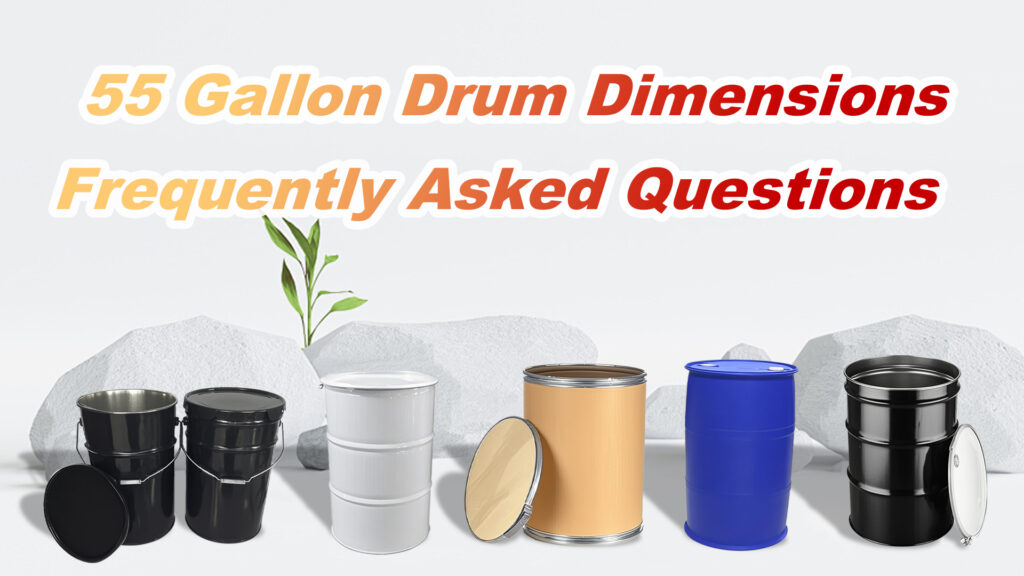わかった, let’s talk engines. If you’re like me, your car isn’t just a tool to get from A to B; it’s an investment, maybe even a bit of a passion project. We want our engines to run smoothly, last longer, and maybe even get back some of that pep they had when they were younger. This often leads us down the rabbit hole of engine oil additives. Two names that pop up frequently are Engine Restorer and various Triax Oil Additives.
I found myself wondering: What if I combined them? Could I get the best of both worlds – the compression-restoring magic claimed by Engine Restorer そして the advanced friction reduction promised by Triax? It sounds tempting, like a super-cocktail for my engine’s health.
But before pouring two different concoctions into my engine’s lifeblood (the oil), I decided I needed to do some serious homework. Mixing chemicals without understanding their interactions can be risky, especially in something as complex and expensive as a car engine. それで, I embarked on a mission to understand these products individually and, more importantly, figure out if they can play nicely together. This article is the result of that journey – sharing what I’ve learned from a driver’s perspective, hoping to answer the questions you might have too.
First Things First: Why Do We Even Consider Oil Additives?
Modern engine oils are marvels of chemical engineering. They come packed with their own additive packages designed to clean, cool, lubricate, and protect our engines under incredible stress. So why add more?
Well, sometimes we’re looking for something extra:
- Addressing Specific Problems: Maybe my older car is burning a bit of oil or feels sluggish. I might look for an additive specifically designed to tackle that symptom.
- Seeking Enhanced Protection: Perhaps I push my car hard, tow heavy loads, or just want maximum longevity. An additive promising extra wear protection or friction reduction seems appealing.
- Compensating for Age: High-mileage vehicles can suffer from worn seals, reduced compression, and sludge buildup. Certain additives claim to help mitigate these issues.
- The “Better Than Stock” Mentality: Some of us just like to optimize and feel we can improve upon the standard oil formulation.
Engine Restorer and Triax additives fall squarely into these categories, but they aim to achieve their goals in different ways. Let’s break them down.
Understanding Engine Restorer (Engine Restore & Lubricant with CSL)
This is a product that’s been around for a while, and its core claim is quite specific.
What it Claims to Do: Engine Restorer’s main selling point is its use of “CSL” (Copper, Silver, Lead) microparticles suspended in a base oil. The theory is that as oil circulates, these soft metallic particles are drawn into microscopic scratches and wear points on cylinder walls. Through heat and pressure, they supposedly fill these imperfections, leading to:
- Restored Cylinder Compression: By sealing the tiny gaps between piston rings and cylinder walls, it aims to bring compression numbers closer to original specs.
- Reduced Oil Consumption: Better sealing can mean less oil slipping past the rings and burning up.
- Increased Power and Efficiency: Improved compression generally translates to a more efficient combustion process.
- 静かな操作: Filling wear spots might reduce some engine noise.
How it Supposedly Works: Imagine tiny metal fillers smoothing out a rough surface at a microscopic level. That’s the essence of the CSL technology claim. It’s marketed primarily as a solution for engines showing signs of wear, particularly loss of compression.
My Initial Thoughts & Potential Concerns: The idea sounds intriguing, almost like a mechanical “healing” process. しかし, questions immediately popped into my mind:
- Where do these metal particles ultimately end up? Do they stay put, or do they circulate and potentially clog oil passages or the oil filter?
- Is the “filling” effect permanent, or does it need constant replenishment?
- How does it interact with the existing additives in my high-quality synthetic oil?
- Could these metallic particles interfere with sensitive components or sensors?
While many users report positive results, especially in older, worn engines, there are also debates online and among mechanics about its long-term effects and universal effectiveness.
Understanding Triax Oil Additives
Triax is a brand that offers a range of lubricants and additives, often positioning themselves as high-performance or heavy-duty solutions. Their oil additives typically focus on different mechanisms than Engine Restorer.
What They Claim to Do: Triax additives usually emphasize things like:
- Extreme Friction Reduction: Using advanced chemistry (sometimes mentioning things like Boron, Molybdenum, Nanotechnology, or Ceramics) to create ultra-slippery surfaces.
- Enhanced Wear Protection: Forming a protective layer on metal parts to shield them under high pressure and temperature.
- Improved Fuel Economy: Less friction means less wasted energy.
- Engine Cleanliness: Some formulations might include detergents or dispersants to combat sludge and deposits.
- Extended Oil Life: By reducing oxidation and wear, they might claim to help the base oil last longer (though following manufacturer oil change intervals is still crucial).
How They Supposedly Work: Instead of filling gaps like Engine Restorer, Triax additives generally work by modifying surfaces または enhancing the oil’s properties. This could involve:
- Friction Modifiers: Molecules that chemically bond to metal surfaces or form layers to reduce friction (例えば。, Moly disulfide, Boron compounds).
- Anti-Wear Agents: Compounds like ZDDP (Zinc dialkyldithiophosphate) that activate under pressure to create a sacrificial layer preventing metal-to-metal contact.
- Viscosity Index Improvers: Helping the oil maintain its optimal thickness across a wider temperature range.
- Detergents/Dispersants: Keeping contaminants suspended in the oil so they can be removed by the filter, rather than forming sludge.
My Initial Thoughts & Potential Concerns: Triax products often sound technologically advanced. The focus on friction reduction and wear protection resonates with anyone wanting peak performance and longevity. My concerns here are slightly different:
- Modern engine oils already contain sophisticated additive packages. Can adding more friction modifiers or anti-wear agents upset the delicate chemical balance?
- Are these additives compatible with 全て types of engine oil (conventional, synthetic blend, full synthetic)?
- Could certain chemistries (like older forms of ZDDP in high concentrations) potentially harm catalytic converters over the long term?
- Which specific Triax additive are we talking about? They have multiple products, potentially with different formulations.
The Big Question: Can Engine Restorer and Triax Oil Additive Be Used Together?
それで, we have Engine Restorer aiming to physically fill scratches with CSL particles, and Triax additives aiming to chemically modify surfaces or enhance oil properties. Can these two different approaches coexist peacefully in my engine?
The Short Answer (Based on General Chemical Principles and Caution): Probably Not a Good Idea.
The Long Answer – Why Mixing is Risky:
Mixing different aftermarket oil additives is generally discouraged by most automotive experts, oil manufacturers, and vehicle manufacturers for several key reasons:
-
Unknown Chemical Interactions: This is the biggest risk. Engine oil is a complex blend. The additives in your base oil (like detergents, dispersants, anti-foam agents, anti-wear agents, viscosity modifiers) are carefully chosen to work together synergistically.
- Engine Restorer introduces metallic particles and its own carrier fluid.
- Triax introduces its own blend of friction modifiers, anti-wear agents, 等.
- The Problem: You have no way of knowing how the specific chemicals in Engine Restorer will react with the specific chemicals in the Triax product そして the existing additives in your chosen engine oil.
- Potential Negative Outcomes:
- Neutralization: Additives could counteract each other, diminishing or eliminating their intended benefits. For instance, dispersants designed to keep particles suspended might conflict with Engine Restorer’s goal of having particles deposit in scratches.
- Precipitation: Chemical reactions could cause components to fall out of suspension, forming sludge or solid deposits. This gunk could clog narrow oil passages, starve critical components of lubrication, and potentially lead to catastrophic engine failure.
- Accelerated Oxidation or Degradation: The mix might destabilize the oil, causing it to break down faster.
- Foaming: Anti-foam agents in the base oil could be overwhelmed or counteracted, leading to oil foaming. Foam is a poor lubricant.
-
Altering Oil Formulation Unpredictably: Adding one additive already changes the oil’s properties. Adding two pushes it even further from its original, tested specification.
- Viscosity: You might inadvertently thicken or thin the oil outside its intended grade (例えば。, turning a 5W-30 into something thicker or thinner), affecting flow rates, especially during cold starts or high temperatures.
- Total Base Number (TBN): This measures the oil’s reserve alkalinity to neutralize acidic combustion byproducts. Additives could potentially deplete the TBN faster or interfere with its function.
- Additive Clash: As mentioned, the different types of additives might simply not be designed to coexist. Detergents might fight friction modifiers; anti-wear agents might react poorly with metallic particles.
-
Over-Treating the Oil: 時々, more is definitely not better. Engine oils are formulated with an optimal balance of additives. Overloading the oil with certain components (例えば。, too much ZDDP, too many detergents) can sometimes lead to negative effects like:
- Increased deposit formation in certain engine areas.
- Potential harm to seals or gaskets if the chemistry is incompatible.
- Long-term effects on emissions systems (like catalytic converters).
-
Voiding Warranties: If your vehicle is still under warranty (powertrain warranty, especially), using any aftermarket oil additive could potentially void it if an engine problem arises and the manufacturer attributes it to the additive. Using 二 different additives significantly increases this risk. Manufacturers design engines to work with oils meeting specific specifications (like API, ILSAC, or their own certs like GM dexos, Ford WSS, 等). They generally don’t test or approve aftermarket additive cocktails.
-
Lack of Testing and Endorsement: Neither Engine Restorer nor Triax (to my knowledge based on publicly available information) explicitly states that their product is safe or recommended to be used in conjunction with the other specific product. Additive manufacturers typically test their product with standard engine oils, not with oils already treated with another brand’s potent additive package.
What Do the Manufacturers Say?
This is critical. I searched for official statements from the makers of Engine Restorer and Triax regarding mixing their products with other additives. I could not find any explicit approval or recommendation for using them together. In the absence of such guidance, the default assumption should be caution. Additive manufacturers usually provide instructions for use with standard engine oil. Deviating from this adds layers of unknown risk.
- Recommendation: Before considering mixing any additives, check the product labels and websites for both products そして consult your vehicle owner’s manual regarding the use of aftermarket oil additives in general. If in doubt, contacting the technical support departments of the additive companies directly might yield an answer, although they may simply advise against mixing for liability reasons.
If Not Mixing, What Are My Alternatives?
わかった, so mixing these two is likely a bad idea. What should I do instead if I’m still looking to improve my engine’s health or performance?
-
Use the Right High-Quality Engine Oil: This is the absolute foundation.
- Use the viscosity grade recommended in your owner’s manual (例えば。, 5W-30, 0W-20).
- Choose an oil that meets the latest API (American Petroleum Institute) and ILSAC (International Lubricant Specification Advisory Committee) standards (例えば。, API SP, ILSAC GF-6).
- Consider high-quality synthetic oils. They generally offer better protection, stability, and cleanliness than conventional oils, especially under extreme temperatures or stress.
- For older cars, look into “high-mileage” oils. These are specifically formulated with seal conditioners and slightly different additive balances to cater to the needs of engines typically over 75,000 miles.
-
Stick to Regular Oil Change Intervals: Clean oil and a fresh filter are paramount. Follow the manufacturer’s recommended schedule (or even shorten it slightly if you drive under severe conditions like lots of short trips, dusty environments, or towing). Don’t rely on an additive to “extend” oil life beyond recommended intervals unless the oil itself is specifically rated for extended drains そして your driving habits permit it.
-
Diagnose, Don’t Just Treat Symptoms:
- Feeling sluggish or low power? Before reaching for Engine Restorer, get a proper compression test done. Low compression could be due to worn rings (where Restorer might help), but it could also be valve issues, head gasket problems, or incorrect timing, which an additive won’t fix.
- Engine noise? Identify the source. It could be lifter tick, piston slap, bearing noise, or something external. An additive is unlikely to fix significant mechanical wear.
- Burning oil? It could be piston rings, valve stem seals, or leaks. Engine Restorer might help with ring sealing, but won’t fix worn valve seals.
-
Choose One Additive (If Necessary) Based on Your Primary Goal: If, after careful consideration and research, you decide an additive is warranted:
- If your main diagnosed issue is loss of compression due to cylinder wall wear in an older engine: Engine Restorer might be a candidate to try, understanding the potential risks and lack of guarantees. Use it exactly as directed with the recommended base oil.
- If your main goal is maximizing friction reduction and wear protection in a generally healthy engine (perhaps for performance or heavy use): あ specific Triax product (or a similar high-quality friction modifier/anti-wear additive from another reputable brand) might be considered. Again, use it exactly as directed, understand the risks, and be aware it might slightly alter the oil’s formulation.
- Never use both simultaneously.
-
Address Mechanical Issues Mechanically: Additives are not magic potions. They cannot fix broken parts, significantly warped surfaces, or completely worn-out components. If your engine has serious mechanical problems, the only real solution is repair or rebuild.
Aspects I Need to Consider Before Using Any Additive
Before I pour anything extra into my crankcase, here’s a checklist I run through:
| Consideration | My Thought Process | Why it Matters |
|---|---|---|
| Engine Age & Condition | Is my engine relatively new and healthy, or old and showing signs of wear (例えば。, oil consumption, low power)? | Additives are often targeted at specific conditions (例えば。, high mileage, wear). |
| Specific Symptoms | What exactly am I trying to fix or improve? (例えば。, noise, oil burning, friction, general protection) | Helps choose the right type of additive, if any, or indicates a need for diagnosis. |
| Vehicle Warranty | Is my car still under powertrain warranty? | Using aftermarket additives could potentially void the warranty. |
| Current Oil | What type, brand, and grade of oil am I using? Is it high quality and meeting specs? | The base oil quality is fundamental. Additives interact with the base oil package. |
| Manufacturer Stance | What does my car manufacturer say about oil additives in the owner’s manual? | They often advise against them. |
| Additive Claims | What does the additive claim to do? How does it claim to work? Are these claims realistic/supported? | Helps manage expectations and understand the potential mechanism/risks. |
| Potential Risks | What are the downsides? (例えば。, Chemical incompatibility, warranty issues, unpredictable results, cost) | Weighing risks vs. potential (often unproven) benefits is crucial. |
| 料金 | How much does the additive cost per treatment? Is it a better value than simply using a higher-quality base oil? | 時々, upgrading your oil is a safer and more effective investment. |
| Instructions | Have I read and understood the exact instructions for the additive I’m considering? | Incorrect dosage or application can cause problems. |
よくある質問 (よくある質問) That Crossed My Mind
Q1: Is it ever okay to mix different oil additives? あ: 一般的に, no. Unless two additives are specifically designed and marketed by the same manufacturer to be used together as part of a system (which is rare), it’s best to avoid mixing. The risk of negative chemical interactions is too high.
Q2: What if I already mixed Engine Restorer and a Triax additive? What should I do? あ: Don’t panic, but act prudently. * Monitor Closely: Pay attention to any changes in engine sound, performance, oil pressure (if you have a gauge), or warning lights. * Consider an Early Oil Change: The safest course of action is often to drain the mixture relatively soon and refill with fresh, high-quality oil of the correct grade, plus a new filter. This removes the potentially problematic cocktail from your engine. * Avoid Repeating: Don’t mix them again in the future.
Q3: Do professional mechanics recommend mixing oil additives? あ: Most reputable mechanics will advise against mixing aftermarket oil additives. They prioritize using the correct specification oil and addressing root mechanical problems rather than relying on potentially unpredictable chemical treatments. Some might recommend a specific additive for a specific problem (like a seal conditioner for a minor leak), but rarely a cocktail of different types.
Q4: How do I even know if an oil additive is working? あ: This is tricky. * Subjective Measures: You might feel like the engine is smoother or quieter, but this can be placebo effect. * Objective Measures: For Engine Restorer, a before-and-after compression test is the most direct measure. For friction reducers like Triax, measuring fuel economy changes (under tightly controlled conditions) might show something, but it’s often small and hard to isolate from other factors. Reduced oil consumption could be another sign. * Used Oil Analysis (UOA): Sending a sample of your used oil to a lab can provide data on wear metals, contaminants, and oil condition. Comparing UOAs before and after using an additive might show changes, but interpretation requires expertise.
Q5: Can oil additives actually damage my engine? あ: はい, potentially. While many users use additives without apparent issues, improper use or incompatible mixtures できる cause harm. Risks include: * Clogged oil passages due to sludge or precipitated additives. * Accelerated wear if the oil’s lubricating properties are compromised. * Damage to seals or gaskets if the additive chemistry is aggressive or incompatible. * Issues with emissions systems (例えば。, catalytic converter poisoning from excessive certain elements). * Interference with sensitive components like variable valve timing systems.
My Final Conclusion: Stick to One Lane or Trust Your Oil
After digging into this, my initial excitement about creating an engine super-juice by combining Engine Restorer and a Triax additive has definitely cooled. The potential risks associated with unknown chemical interactions, upsetting the oil’s balance, and potentially voiding warranties far outweigh the speculative benefits.
My personal conclusion and recommendation is clear: Do not mix Engine Restorer and Triax Oil Additives (or generally any two different aftermarket oil additives from different brands with different functions).
The smarter path involves:
- Using a high-quality engine oil that meets or exceeds your vehicle manufacturer’s specifications. Full synthetic is often a worthwhile upgrade.
- Following recommended oil change intervals diligently.
- Diagnosing any engine issues properly before resorting to additives.
- If you choose to use an additive after careful consideration, select one product that targets your primary concern and follow its instructions precisely. Weigh the potential benefits against the inherent risks.
Ultimately, the carefully formulated additive package already present in a good quality engine oil is designed to provide comprehensive protection. Trying to play chemist by adding multiple extra concoctions is a gamble I’m no longer willing to take with my engine.
On a related note for manufacturers and businesses looking for packaging solutions, particularly for automotive products like additives or oils, reliable packaging is crucial. Companies like ファンシュン operate as world-class can manufacturers and suppliers. They specialize in providing high-quality metal cans, including aerosol cans and other container types, suitable for various industrial and consumer products. FANXUN offers customization in different specifications and shapes, ensuring product integrity and safety, which is vital in the automotive chemical industry.























